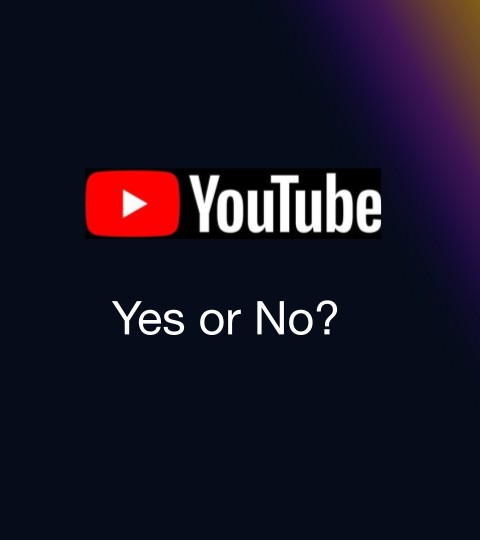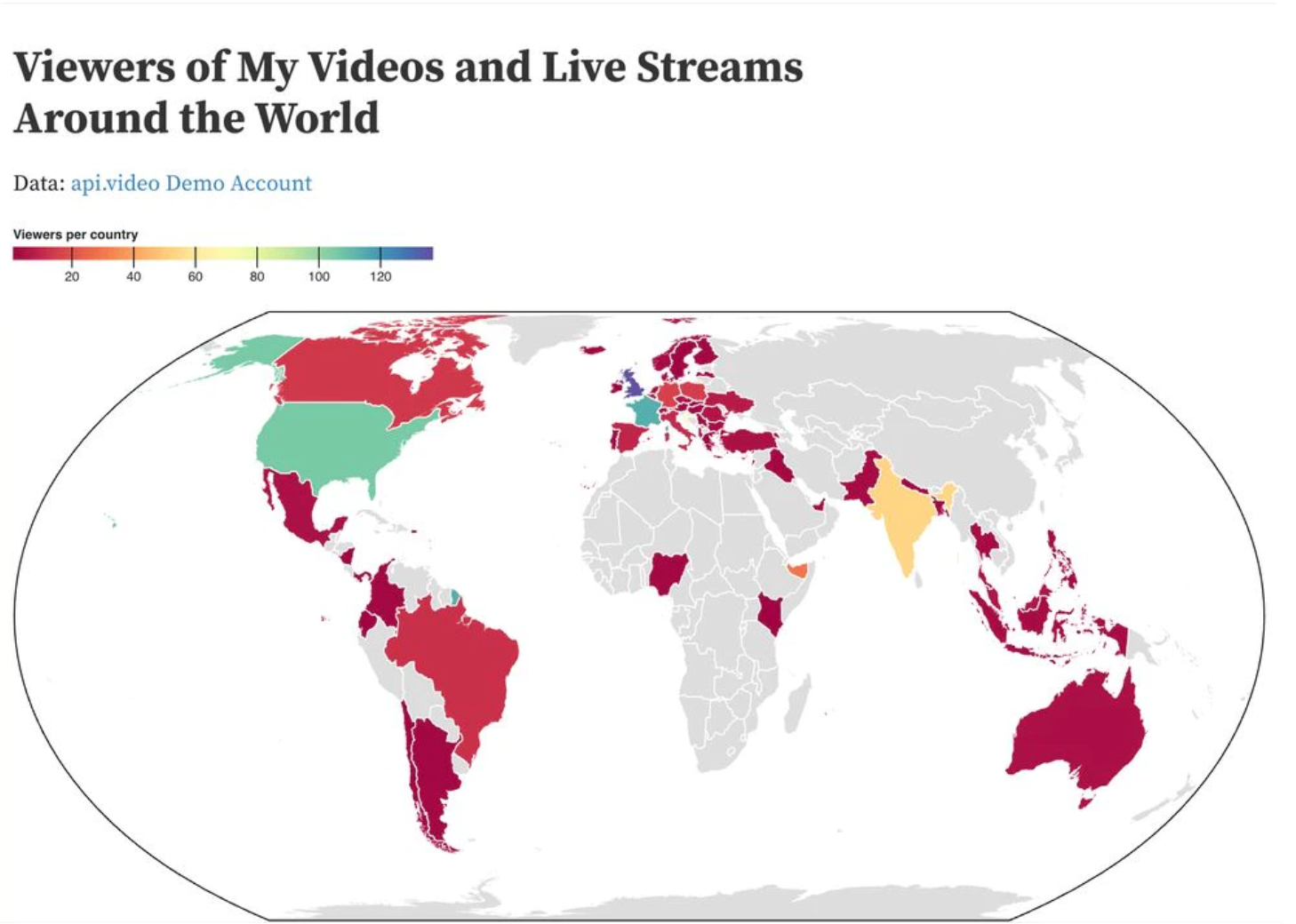If you're new to video content creation, at some point you'll ask yourself whether you should host your videos on a site like YouTube or your own website. YouTube is incredible for content creators and for those looking to build fanbases for their content. For a business that wants to make a conversion to a buying customer, YouTube may not be the best spot for that business's video content. Instead, for many businesses the best place for video is their own website. And by that I mean hosting video content yourself, either entirely or by using a flexible cloud video/video streaming provider. But rather than take my word for it, consider these aspects of handling video content for yourself to make the best decision:
- Business goals and requirements
- Reach
- Engagement
- Conversion
- Analytics
Choosing business goals and requirements
The first step in choosing the right video strategy for your business is going over your goals and requirements. For example, if you prioritize minimal effort, YouTube might be great. However if you prioritize conversions and you're willing to put in a little effort for video SEO and other optimizations, then hosting video on your website might be better.
Make a list of everything that's a requirement or goal to start with. And as you go over the rest of this article, you can refer back to and refine your list. If anything in your list conflicts (for example choosing minimal effort and hosting content on your own site) you can reprioritize or remove certain items. By the end of this article you should have a great idea of what option works best for you.
Reach
When deciding whether to post videos on YouTube, or host them yourself on your site, the first thing to consider is reach. In marketing, reach is how many people see your content. It doesn't necessarily mean they engage with the content, but it means it's at least put in front of them. A big selling point for YouTube is that when you add your video there, you get the benefit of YouTube's algorithms like related videos, circulating popular videos, automatic video SEO and indexing of your content and features like playlists (see how to create your own playlist feature here: Playlist), YouTube search and more. This has the potential for huge reach.
It sounds great. The problem is about 500 hours of video are uploaded to YouTube every minute. The odds that content for your business is going to be popular right off the bat and benefit from some of the YouTube algorithms geared for popularity are not strong. While you might put in minimal effort tweaking video SEO for reach, you will put in maximum effort figuring out how to:
- Get subscribers
- Engage relevant audience
- Buy google ads to advertise your content
- Drive people to your YouTube channel
Another issue is that you are spending time driving people to your YouTube channel. If you're selling something, you probably want people to go to your website and buy what you're selling. So you're sending traffic to YouTube to watch a video to convince them to go to your website.
You can cut out a step by placing the video on your own website. It can be tricky to host your own video content, so you can host, stream and deliver content from a cloud video provider. By placing the content on your own site, you now benefit from your own site's existing reach, the SEO work you do for your site and when you advertise you are always driving traffic to something on your site instead of elsewhere. You can also do your own video SEO to get your content indexed. The end result is a centralized spot where people go to learn about you. The downside is if you wanted monetization of content handled for you, it wouldn't be. You have to handle that yourself.
Engagement
Engagement is about creating an interactive experience with your content. It's coming up with ways to get them to watch more of the videos you create, check out more of your products and become more loyal and attached to your product by encouraging them to interact with you. Interactions can be all different kinds of things, from clicking through different pages of content to agreeing to join a newsletter to signing up for a free trial of a product.
YouTube is designed to maximize audience engagement, but specifically focused on watching videos. You can subscribe to content, explore new content, review your watch history, create or watch playlists made by others and YouTube is constantly trying to show you content it think you will like based on your other viewing habits. If all you need is people watching video content, this is perfect. The issue is, YouTube has its own goals for engagement, and they might not align with yours.
On YouTube, their goal is to keep viewers on YouTube, watching as many videos as possible so they can show you as many ads as possible. Your content is not a priority. If you know how to create material that is valued by YouTube because of the kind of ads they can place on your content, then you can do very well there. You won't be able to easily add other kinds of engagement though. Everything will be focused on interacting with video content.
If instead, you decide to set up content on your own site, the immediate plus is you can make your content the priority. At the end of a video, you can always recommend your own content for further viewing. You can also control how it may be viewed and by who (check out our article about creating self-guided content Build a self guided training course with api.video. And to start with, only your content will be available. Depending on how elaborate you want to get with the video content you offer, you can create your own algorithms for what videos to show the viewer next based on their session (see our article about Dynamic Metadata). You can choose to keep your content ad free and create your own calls to action. Maybe you ask the user to watch something and then sign up for your product right on the site. Or you ask for their email so you can send them a newsletter. You have many more options than you do on YouTube.
Conversion
There is no doubt that the best place for conversion starts with your website where you're selling your product or offering your trial. Extra steps, like bringing a person from YouTube to your site, increase the chance that a potential customer will lose interest or find something else to do online.
YouTube, as we discussed earlier, is great about coming up with new content for viewers to watch. If you just interested a potential customer in your product, but YouTube distracts them into watching a cool video where they then forget to check out your website, you've lost a conversion. There aren't tons of obvious ways to get conversions out of a YouTube video. You can possibly embed links, but these take you away from YouTube, and frequently people would prefer to stay on the site watching content.
Another issue is that your YouTube video is using the excellent, automatic video SEO provided by YouTube. This is great, but YouTube gets the traffic from that. And then, because it's not a great place for conversions you lose out.
It's much better to put the content on your own website, spend the extra time to set up the video SEO, and then manage the traffic from that.
Analytics
In order to improve the effectiveness of your marketing, analytics are a must. YouTube offers detailed analytics and a plus is they're easily accessible through a GUI if you aren't technically inclined. One potential issue is you may have to do some extra work to figure out what traffic comes from your YouTube content to your site.
You can get the same degree of detail with analytics from cloud video providers as well. Places like Vimeo and api.video (yes us!) offer detailed analytics. At api.video, you can get all kinds of details about your videos, like location (here's a fun post about creating a Choropleth map), device type, where the viewer came from to start the session, what they did with a video during a session (for example, did they drop off part way through, where was that?) and more.





